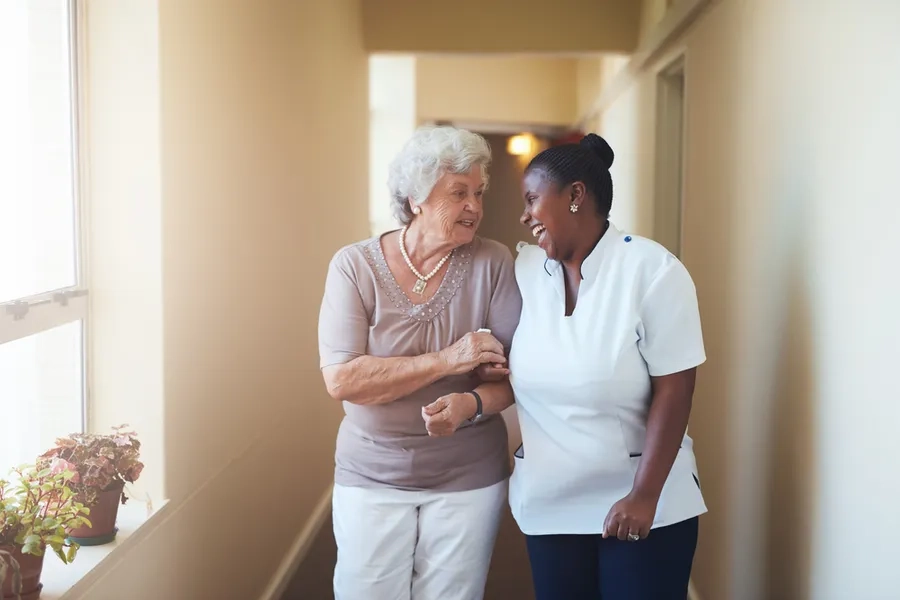Balance weakens with age, but exercise can help reduce falling risks.

The article emphasizes fall prevention for older adults, suggesting lifestyle changes, home adjustments, and exercises for balance. It highlights the significance of understanding ageing and personal anecdotes to stress proactive measures.
My spouse and I recently had an encounter at the supermarket that left us with a newfound appreciation for the importance of fall prevention among older adults. While browsing the aisles, we observed an elderly lady reaching for some produce. In a precarious moment, she lost her balance, teetering dangerously forward. Thankfully, she instinctively leaned into her shopping cart, averting a potentially serious fall.
It's a scenario all too familiar in the lives of many older adults. Statistics reveal that approximately one in four individuals in this demographic experiences a fall each year, making it the primary cause of injuries among those aged 65 and above. These incidents often result in debilitating consequences such as hip fractures and traumatic brain injuries, with a significant correlation to increased risk of nursing home placement.
As a physical therapist and clinical scientist dedicated to fall prevention in older adults, particularly those aged 65 and above, I've devoted considerable time to unraveling the complexities behind these occurrences and collaborating with patients and their families to mitigate such risks.
Understanding the Factors Contributing to Falls in Older Adults
Aging is an inevitable process that affects every facet of our physiology. While the rate and extent of ageing may vary, physical decline is a universal aspect of life, often commencing in our thirties rather than our sixties as commonly perceived. Older adults are predisposed to falls due to age-related changes in their bodies, compounded by vision impairments that render them susceptible to environmental hazards such as uneven terrain, stairs, and poorly lit areas.
Mitigating Fall Risks Through Home Environment Modifications
Implementing simple modifications to the home environment can significantly diminish the likelihood of falls among older adults. However, it's essential to understand the root causes of these incidents, which often stem from:
1. Declining muscle strength and flexibility, resulting in compromised balance and stability.
2. Chronic health conditions like arthritis and Parkinson's disease that impair mobility and coordination.
3.Adverse effects of medications commonly prescribed to older adults, such as dizziness and drowsiness.
4. Age-related vision changes, including reduced depth perception and peripheral vision, exacerbating navigational challenges.
5. Sedentary lifestyles and limited physical activity, leading to diminished strength and agility.
6. Cognitive impairments like dementia, which impede judgment and spatial awareness, elevating the risk of falls.
7. Insights Into Ageing: Bridging the Gap Between Chronological and Biological Age
While ageing is influenced by genetic predispositions, lifestyle factors play a pivotal role in determining our biological age, which is indicative of our cells' health and functionality. By focusing on lifestyle modifications such as diet, exercise, and stress management, individuals can effectively reduce their biological age and enhance their quality of life.
Empowering older adults to take charge of their biological age empowers them to defy long-standing beliefs regarding the inevitability of age-related ailments. For instance, our research has demonstrated that regular aerobic exercise can mitigate motor decline, irrespective of when individuals commence their fitness journey.
Strategies for Fall Prevention Through Lifestyle Modifications
Incorporating regular exercise, maintaining a balanced diet, managing chronic conditions, reviewing medication regimens, and undergoing routine vision assessments are integral components of fall prevention among older adults. Physical therapists employ various exercises to enhance balance, including:
1. Balance training to improve coordination and proprioception.
2. Strength training to bolster muscle strength and walking speed.
3. Tai chi to enhance balance, strength, and flexibility.
4. Yoga poses targeting balance and stability.
5. Flexibility training to alleviate stiffness and enhance mobility.
Additionally, the judicious use of assistive devices, such as canes and walkers, can enhance mobility and reduce fall risks, provided individuals receive proper training in their utilization.
Reflecting on the Incident at the Supermarket
Recalling the incident involving the elderly lady in the supermarket, I'm reminded of the importance of disseminating knowledge about healthy ageing practices. While we can't ascertain whether she implemented these strategies, it's reassuring to envision her potentially averting a fall through serendipity. As they say, sometimes being in the right place at the right time can make all the difference—especially when it's amidst the vibrant produce aisle.






